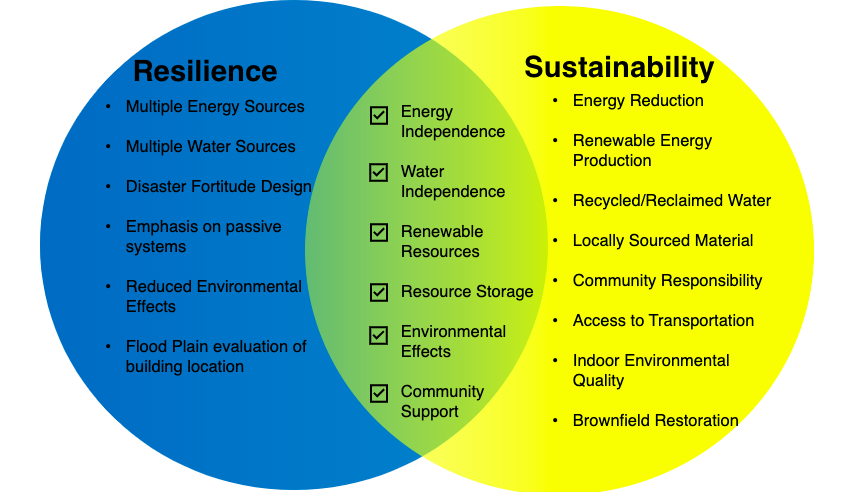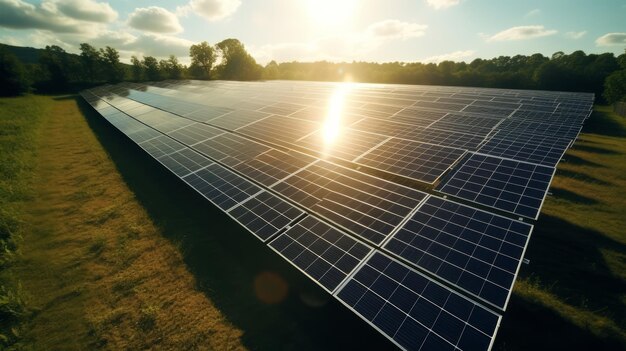
Resilience in Sustainability: Adapting to Change for a Better Future
The world is changing faster than ever before. From unpredictable weather patterns and resource shortages to global health crises and rapid technological advancements, we live in an era of constant shifts. In this dynamic landscape, two powerful concepts emerge as our guiding stars for a stable and prosperous future: Resilience and Sustainability.
While often discussed separately, these two ideas are deeply interconnected, forming a vital partnership that helps us not just survive, but thrive amidst uncertainty. This article will explore what resilience and sustainability truly mean, how they work together, and why embracing them is crucial for individuals, communities, and our planet.
What is Resilience? Bouncing Back and Adapting
Imagine a sturdy tree bending in a strong wind, but not breaking. Or a spring coiling up and then expanding back to its original shape. That’s the essence of resilience.
In simple terms, resilience is the ability of a system, a community, or even an individual to withstand shocks, recover from setbacks, and adapt to change. It’s about being flexible, strong, and able to bounce back, often even stronger than before.
Think about:
- A town hit by a flood: A resilient town would have early warning systems, evacuation plans, and community support networks to help people recover quickly and rebuild smarter.
- A business facing economic downturn: A resilient business might have diverse income streams, flexible work arrangements, and a strong customer base that helps it weather the storm.
- An individual experiencing a personal challenge: A resilient person learns from the experience, finds support, and adapts their outlook to move forward.
Resilience isn’t just about resisting change; it’s about learning from it and evolving.
What is Sustainability? Living Well, Now and Later
Now, let’s talk about sustainability. This term has become a buzzword, but its core meaning is incredibly important and surprisingly simple:
Sustainability is about meeting the needs of the present without compromising the ability of future generations to meet their own needs.
It’s about making choices today that ensure there are enough resources, a healthy environment, and a fair society for everyone, for a very long time.
Sustainability is often broken down into three key pillars:
-
Environmental Sustainability: Protecting our planet’s natural resources and ecosystems. This includes things like:
- Reducing pollution (air, water, land)
- Conserving biodiversity (protecting plants and animals)
- Using renewable energy sources (solar, wind)
- Managing waste responsibly (reduce, reuse, recycle)
- Protecting forests, oceans, and fresh water.
-
Social Sustainability: Ensuring fair and equitable access to resources and opportunities for all people. This involves:
- Promoting human rights and equality
- Ensuring access to education, healthcare, and safe housing
- Building strong, inclusive communities
- Supporting fair labor practices and living wages.
-
Economic Sustainability: Creating stable and prosperous economies that can last without depleting resources or harming society. This means:
- Encouraging local economies and diverse businesses
- Investing in green technologies and sustainable industries
- Promoting responsible consumption and production
- Ensuring long-term financial stability without excessive debt or environmental damage.
The Powerful Partnership: Resilience + Sustainability
Why are these two concepts so crucial together? Imagine building a house. Sustainability is about using the best, most environmentally friendly materials and designing it to be energy-efficient. Resilience is about making sure that house can withstand a hurricane, an earthquake, or a long power outage.
- Sustainability without Resilience: If a community is sustainable (e.g., uses solar power, has local farms) but isn’t resilient, a single major event (like a severe drought or a power grid failure) could wipe out all that progress.
- Resilience without Sustainability: If a community is resilient (e.g., has strong emergency services) but isn’t sustainable, it might recover from a disaster, but it’s still depleting its resources and harming its environment, setting itself up for future, larger problems.
When combined, resilience and sustainability create a powerful synergy:
- Resilience makes sustainability possible in a changing world. It ensures that our efforts to create a sustainable future aren’t derailed by unexpected shocks.
- Sustainability builds the foundation for long-term resilience. By living within our planetary means and fostering strong communities, we reduce our vulnerability to future crises.
It’s not just about surviving change; it’s about adapting, learning, and thriving in a world that is constantly evolving.
Types of Resilience in a Sustainable Context
To understand how resilience works within sustainability, let’s look at its different forms:
1. Environmental Resilience
This focuses on the ability of our natural world to cope with stress and disturbance.
- What it means: Healthy ecosystems (like forests, wetlands, and coral reefs) are naturally more resilient. They can absorb pollution, regulate climate, and provide resources more effectively than damaged ones.
- Why it’s important:
- Climate Change Adaptation: Healthy ecosystems (e.g., mangroves) can protect coastlines from storm surges, reducing the impact of extreme weather.
- Biodiversity Protection: A wide variety of species makes ecosystems more stable and less prone to collapse when one species is affected.
- Resource Security: Protecting water sources, fertile soil, and clean air ensures essential resources remain available.
- Examples:
- Restoring wetlands to act as natural flood barriers.
- Planting diverse forests that are more resistant to disease.
- Adopting regenerative agriculture practices that improve soil health.
2. Social Resilience
This refers to the capacity of human communities to withstand and recover from challenges.
- What it means: Strong social networks, equitable access to resources, and inclusive decision-making processes make communities more resilient. It’s about people working together, supporting each other, and having the resources to cope.
- Why it’s important:
- Disaster Preparedness & Response: Communities with strong social bonds are better at organizing aid, sharing information, and helping vulnerable members during crises.
- Health & Well-being: Access to healthcare, education, and social support systems improves overall community health and ability to cope with stress.
- Equity & Justice: When everyone has a voice and fair opportunities, society is more stable and less prone to conflict or breakdown.
- Examples:
- Community gardens that foster local food security and social connection.
- Neighborhood watch programs and mutual aid networks.
- Inclusive governance structures that involve all citizens in planning for the future.
3. Economic Resilience
This is about the ability of economic systems to maintain stability and function effectively in the face of shocks.
- What it means: Diverse economies, local production, and fair distribution of wealth make economic systems more robust and less vulnerable to global disruptions.
- Why it’s important:
- Job Security: Diverse local businesses can offer more stable employment than reliance on a single industry.
- Supply Chain Stability: Localized production and diversified suppliers reduce vulnerability to global shipping delays or geopolitical events.
- Financial Stability: Sustainable financial practices reduce the risk of economic crashes and ensure long-term prosperity.
- Examples:
- Supporting local businesses and farmers markets.
- Investing in renewable energy, which creates local jobs and energy independence.
- Developing circular economy models where waste from one industry becomes a resource for another.
Why is Building Resilience Crucial for a Sustainable Future?
The urgency of building resilience alongside sustainability cannot be overstated. Here’s why:
- Climate Change Impacts: We are already seeing more frequent and intense heatwaves, droughts, floods, and storms. Resilience helps us prepare for and recover from these events.
- Resource Scarcity: Finite resources like fossil fuels, fresh water, and fertile land are under increasing pressure. Resilience helps us adapt to these limits by finding alternatives and using resources more efficiently.
- Unexpected Shocks: Pandemics, geopolitical conflicts, and economic downturns can happen at any time. Resilient systems are better equipped to absorb these shocks.
- Long-Term Stability: By building resilience, we create systems that are not just sustainable for a few years, but for generations to come. It ensures a stable foundation for human well-being and ecological health.
How Can We Build Resilience? Practical Steps for Everyone
Building resilience isn’t just for governments or large corporations; it starts with each of us. Here are practical steps at different levels:
1. At the Individual Level:
- Mindset: Cultivate a positive, adaptive mindset. View challenges as opportunities to learn and grow.
- Skill-building: Learn practical skills like gardening, basic repairs, first aid, or food preservation.
- Reduce Consumption: Buy less, choose durable goods, and repair items instead of replacing them. This reduces your environmental footprint and reliance on complex supply chains.
- Financial Preparedness: Build an emergency fund and diversify your skills or income sources.
- Local Engagement: Get to know your neighbors and participate in community activities. Strong social ties are a key aspect of personal and community resilience.
2. At the Community Level:
- Local Food Systems: Support local farmers, participate in community gardens, or even grow some of your own food. This reduces reliance on long, vulnerable supply chains.
- Emergency Preparedness: Develop neighborhood emergency plans. Know where to go, who to help, and how to communicate if services are disrupted.
- Resource Sharing: Create tool-sharing libraries, skill-sharing workshops, or community repair cafes.
- Green Infrastructure: Advocate for and implement natural solutions like permeable pavements to manage stormwater, or urban forests for cooling and air quality.
- Community Networks: Foster strong social connections through events, volunteer groups, and mutual aid networks.
3. At the Business Level:
- Diversify Supply Chains: Don’t rely on a single source for critical materials or components. Look for local or regional alternatives.
- Embrace Circular Economy Principles: Design products for durability, reuse, and recycling. Reduce waste and turn it into a resource.
- Invest in Renewable Energy: Transitioning to solar or wind power can reduce energy costs and vulnerability to fossil fuel price fluctuations.
- Employee Well-being: Support your employees’ physical and mental health. A healthy workforce is a more resilient workforce.
- Scenario Planning: Regularly assess potential risks (climate, economic, social) and develop plans for how your business would adapt.
4. At the Government and Policy Level:
- Invest in Resilient Infrastructure: Build roads, bridges, and energy grids that can withstand extreme weather and are less prone to failure.
- Develop Adaptive Policies: Create flexible regulations that can respond to changing environmental and social conditions.
- Support Local Economies: Implement policies that encourage local business development, sustainable agriculture, and renewable energy projects.
- Protect and Restore Ecosystems: Invest in conservation efforts, reforestation, and wetland restoration to enhance natural resilience.
- Promote Education and Research: Fund initiatives that help us understand and address complex challenges related to climate change and sustainability.
The Benefits of Being Resilient
Embracing resilience isn’t just about avoiding disaster; it brings a wealth of positive outcomes:
- Better Preparedness: You’re not caught off guard, reducing stress and potential damage.
- Cost Savings: Proactive measures often cost less than reactive emergency responses.
- Innovation: Adapting to change often sparks creativity and new solutions.
- Stronger Communities: Working together to build resilience strengthens social bonds and collective efficacy.
- Increased Opportunity: Resilient systems are more stable and can seize new opportunities that arise from change.
- Hope for the Future: Knowing we can adapt and thrive gives us a powerful sense of agency and optimism.
Conclusion: Our Adaptive Journey Towards a Sustainable World
The journey towards a sustainable future is not a straight, smooth path. It’s a dynamic landscape filled with challenges and opportunities. By weaving resilience into the fabric of our sustainability efforts, we equip ourselves to navigate this journey with strength, flexibility, and hope.
Resilience helps us stand firm when the winds of change blow, while sustainability ensures we are building a world worth standing for – a world that provides for all, now and for generations to come. It’s about proactive adaptation, collaborative action, and a deep commitment to our planet and its people. Let’s embrace this powerful partnership and build a future that is not only sustainable but also wonderfully resilient.



Post Comment